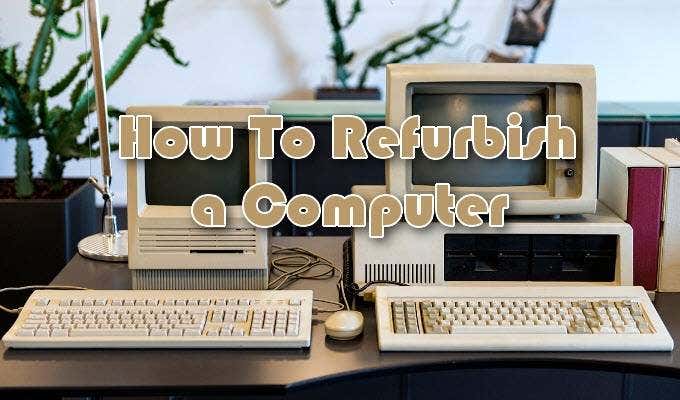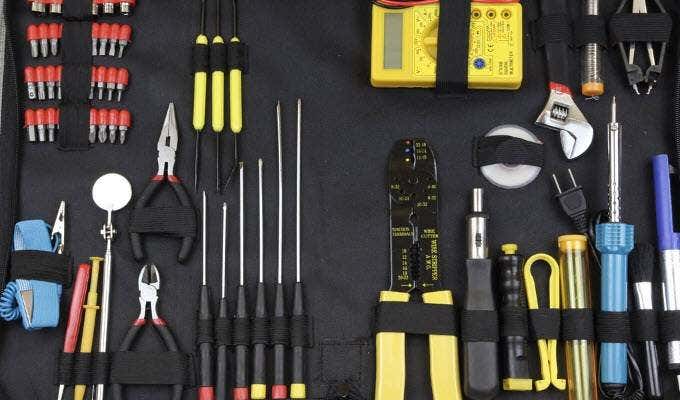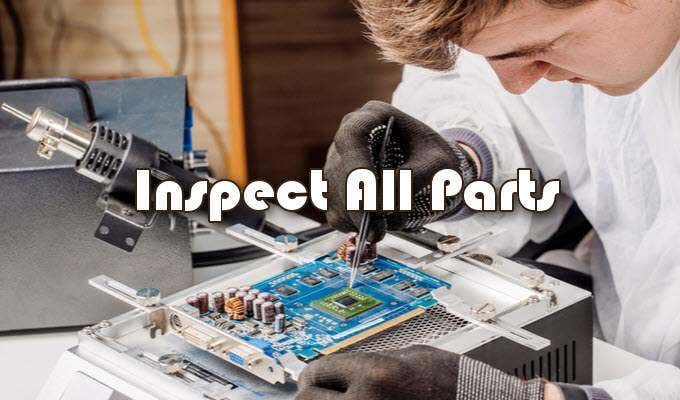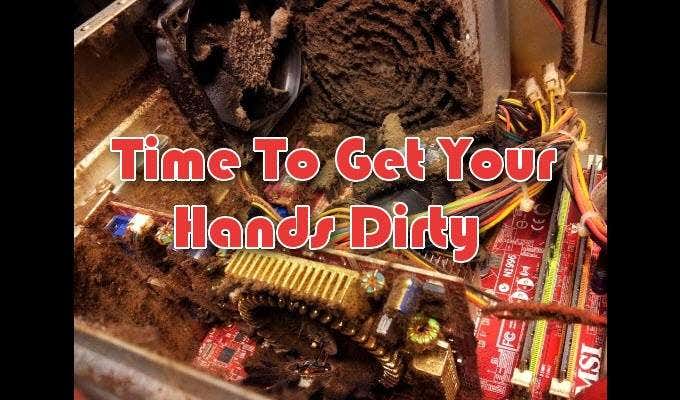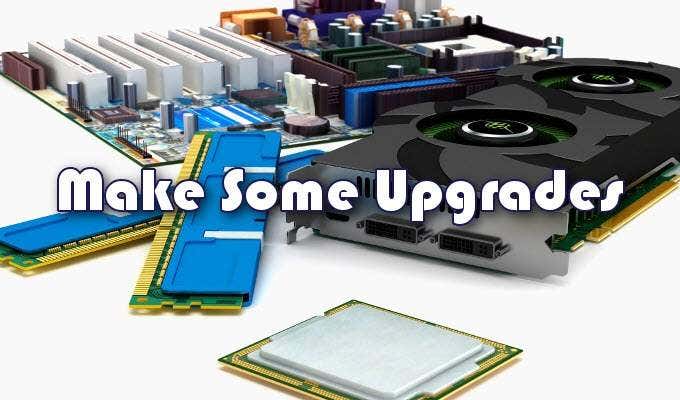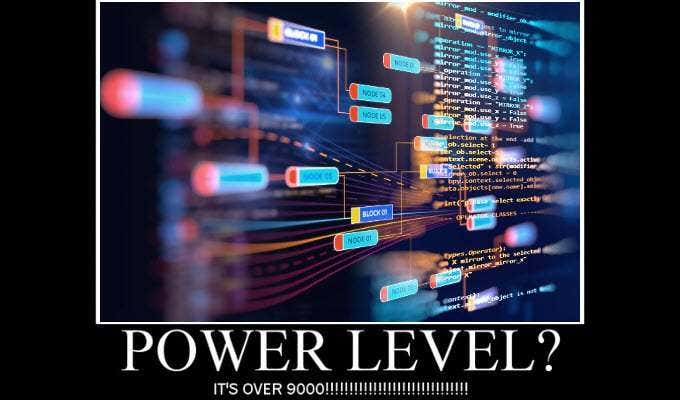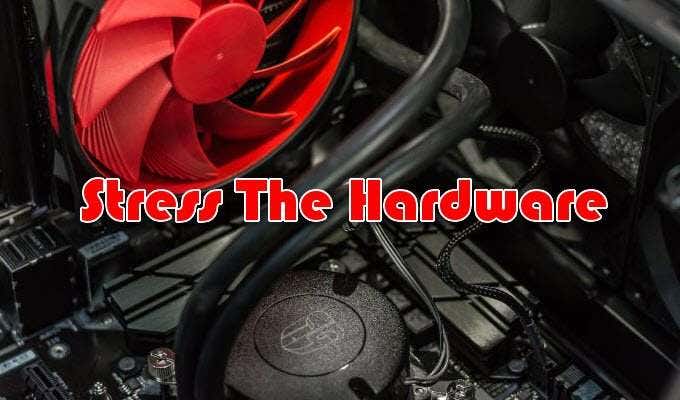To refurbish is to make the computer great again. That’s not to say you need to soup it up to play the latest and greatest games, although you could. It just means to clean it up nicely by replacing and upgrading parts, for either resale or enjoying the good ol’ times of days past. You could always send it in to the manufacturer and let them handle all of the heavy lifting. However, the manufacturer isn’t likely to take the older system back at a price point even near what you’re expecting. Besides, you’d miss out on all of the fun of doing it yourself.
How To Refurbish a Computer
Even with a minimal amount of technical knowledge, you should be able to take on this project yourself. All you’ll need is the proper tools to remove the parts in need of repair or replacement. A screwdriver set with varying heads and some sort of flashlight are the bare essentials. Having a power supply tester, a computer reimaging program on a USB, boot disk, or external hard drive, and a spudger tool if you’re attempting a laptop refurbish, are also great tools to have handy. If your goal is to make a quick buck, you’ll also want to have some acrylic paint or a magic marker on hand for any scuffs or visible scratches in the tower exterior.
Perform a Parts Inspection
To begin, you’ll want to inspect every inch of the computer for damages. Physical problems are more likely to be the biggest issue you’ll face when restoring a computer to its former glory. Touch on every angle including the top and sides of the tower or case, inspect the fans for chips or breaks, all of the ports, connectors, and power supply. Check the motherboard. Any noticeable issues? How many of the ports are directly connected? Do you have expansions? Disk drives? Optical? Be thorough. A strong physical foundation is necessary before we can even touch on the software portion of the refurbishment. Massive, irreparable damages will drive up the cost of the project and may eat into your expected money goal. Any damage you discover should be annotated. Once you finish the physical inspection, find a power cord and plug it into a power source. Make an attempt to turn the computer on. If it comes on just fine, then the rest of the restoration will go by smoothly. Wait a few minutes as it could take a little longer to boot than you’re used to. It’s also possible to hear a few beeps when powered on. This is the hardware’s way of telling you that something is wrong. But what happens if it doesn’t even power on? Then there’s likely to be an internal problem in need of your attention.
A Closer Look
Take a look at the power connectors going from the power supply unit (PSU) to the motherboard. If the computer didn’t turn on and the connections look fine, then there’s probably something wrong with the PSU or motherboard. Without readily available replacements, the cost will be too high making the refurbishment likely not worth the effort. Any other connections that appear incorrect, correct them. A clean computer is a happy computer. The chances are the inside of the case is rather dusty so grab yourself an air compressor and dust it out. You can use compressed air in a can or a portable compressor to dust off the motherboard, cards, disk drives, power supply, any fans (especially the CPU fan on the motherboard), and the case. If you have the latter, do not point the compressor directly at the parts. Instead, make sure to blow out the air in a waving fashion to avoid causing damages.
Parts Upgrades & Replacements
Remove all parts that do not work or have obvious physical damage. A CD-ROM drive and onboard sound card are non-essential items. You can choose to replace them at your leisure but it’s not necessary. The graphics card is a different story. Any damage to that and you’ll need to replace it. The same can be said of the CMOS battery. CMOS, short for Complementary Metal-Oxide-Semiconductor, is the memory located on the motherboard which stores your BIOS settings. This is clearly an important part of the whole package. Other important parts that appear damaged and will need to be looked at are the RAM and faulty hard disk, if applicable. Anything you plan to upgrade will not need replacing. Upgrade the computer as far as you can. Even if the RAM appears undamaged, it’s still a good idea to upgrade it. The hard disk as well. If possible, upgrade the CD-ROM to DVD, and the modem to either gigabit ethernet or a wifi card. The choice is up to you but for a gamer looking for something on the cheap, both may be the better way to go.
Power It Up
Once all parts have been replaced or upgraded, power on the computer to see if you can reach the BIOS screen. A complete computer reimaging is a good idea regardless if you plan to keep or sell the finished product. Darik’s Boot and Nuke (DBAN) is an open-source option to remove all data from the system allowing you to begin from scratch. Opt for a more modern operating system like Windows 10 or Ubuntu/Debian Linux. Installing both is also a viable option. Ensure that you have enough hard disk space to pull off whichever operating system you decide. You should also think about installing additional software, hardware, and peripherals to make it appear more appealing to buyers. This includes cloud storage & backup apps, security software, additional disk storage, as well as a keyboard, mouse, and monitor. Speakers, especially if the sound card was removed, would be something to consider.
Final Testing
Before you can sell it, you’ll want to make sure that everything works. Test the computer out by loading up a few older games, running older software, and stressing the hardware. Windows computers (10/8/7) have the Memory Diagnostics Tool already built in to get you started. However, I would suggest UserBenchmark for a more thorough test reading of your major hardware systems.
